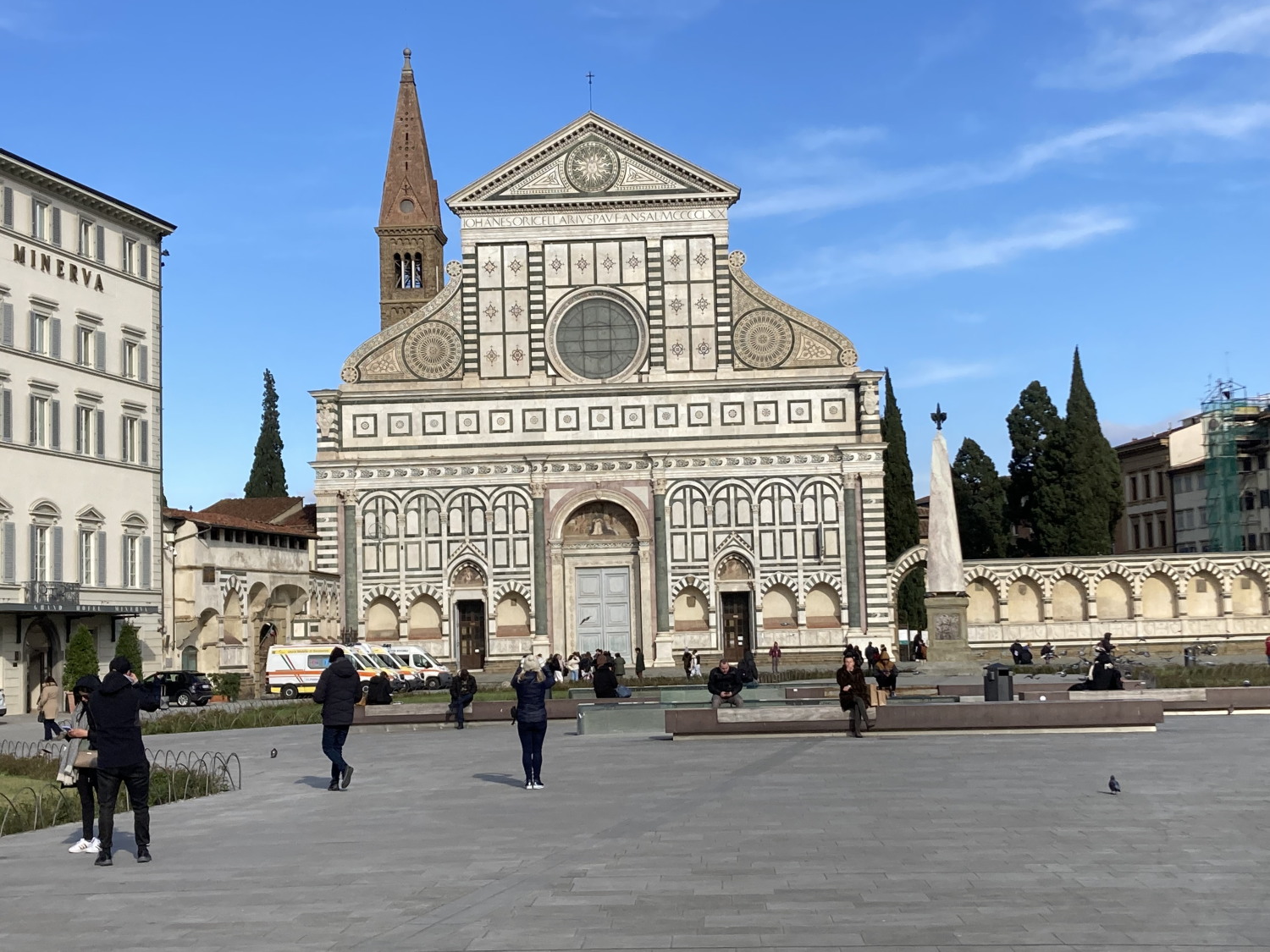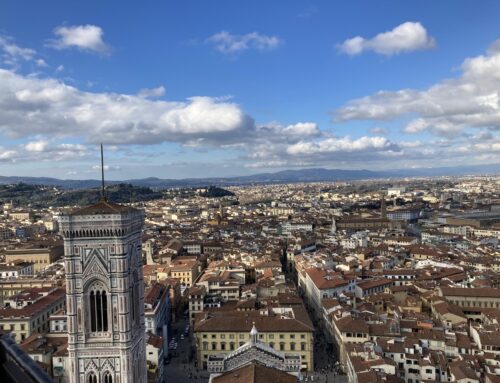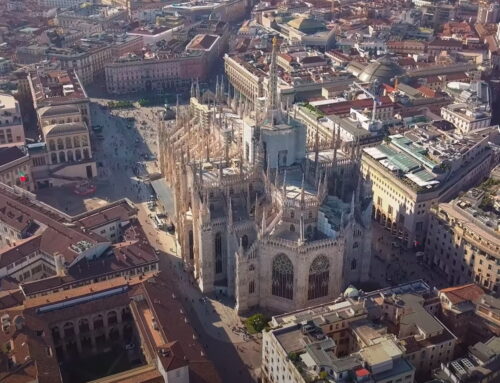Everything you need to know about traveling to Florence, Italy
Florence, the birthplace of the Renaissance, is one of the most beautiful cities in Italy and all of Europe. It’s no wonder then that it is also one of the most popular destinations in Italy.
We put this guide together so you know all the best things to see in Florence, what to do, where to stay and when to go.
Let’s get to it!
Florence location and geography
Parts of the discussions on this page are derived from the Wikipedia page for Florence.
Florence is the capital of the Tuscany region, one of the twenty regions in the Republic of Italy. Geographically, Florence is located in the northern third of Italy, about halfway between Rome and Venice, and about halfway between Rome and Milan.

Because of this location, Florence is easily accessible by both rail and car from these major cities along with Pisa, Bologna, Livorno and La Spezia. This also makes Florence very appealing as a base for any vacation to Italy.
In addition to being the capital of Tuscany, Florence is the most populated city in the region with over 360,000 people within the city limits, which are contained within almost 40 square miles.
The historic center of Florence was designated as a World Heritage site in 1982, and the city attracts millions of visitors from all over the world each year.
While the city is known for its historical sites, museums and architecture, it is also among the top fashion capitals in the world. The Florentine dialect is also the foundation of the Standard Italian language.
A brief history of Florence Italy
Florence originated as a Roman city, and after the fall of Rome, it continued as an important trading and banking center.
Florence is widely regarded as the birthplace of the Renaissance, and was one of the most important cities in all of Europe from the 14th to the 16th century.
As indicated, the language spoken in Florence during the 14th century became the model for what would eventually become the standard Italian language.
This is due in part to the works of Dante, Petrarch and Boccaccio, all of whom were Tuscans.
By the 14th century, Florence’s influence was felt all over Europe as Florentine wealth financed development all over Europe. Florentine bankers helped finance the English kings during the Hundred Years’ War against France and the Papacy.
One of the most important noble families in all of Europe was the Medici family, the de facto rulers of Florence for nearly 400 years.
The family was so powerful that two of the family members actually became Popes in the 16th century; Leo X and Clement VII.
For a brief period beginning in 1861, Florence served as the capital of the Kingdom of Italy, until it was moved to Rome in 1871.
During World War II, Florence was occupied by Nazi Germany from 1943 to 1944. As British troops closed in during the summer of 1944, the order was given to destroy the bridges across the Arno River.

Ponte Vecchio
However, Charles Steinhauslin, consul of 26 countries in Florence at the time, convinced the Germans that the Ponte Vecchio should not be destroyed due to its historical value. Instead, some nearby historical streets were destroyed instead to impede the eventual liberating army.
Florence Italy Climate
Florence has a somewhat mild climate during the Winter, but can get quite hot during the Summer months.
The peak average high reaches 90 degrees in early August, with a high monthly average of 88 in both July and August.
Meanwhile, the average high for the two coldest months of December and January is 51 degrees.

The wet season begins in October and tapers off in December. There is some minimal snowfall in December and January on average. The driest season is July and August.

What you should know before you go to Florence Italy
Here are some tidbits that you should know before traveling to Florence, from the obvious to the not-so-obvious.
Currency: Euro
Language: Italian of course. While English is spoken in the major tourist areas in Florence, if you venture further out, less will be spoken, particularly in the smaller towns. We highly recommend that you learn some Italian before you go. Many Italians will appreciate the effort. Rosetta Stone is a popular app for learning Italian.
Visa Requirements: For stays under 90 days, you do not need a Visa, but you will need your passport.
Electricity: Europe has different electrical outlets than what we have here in the US, so you will need an adapter.
Car Rentals: Florence itself is a very walkable city. However, if you intend to travel out from Florence, and away from major cities and towns such as Pisa and Siena, then you’ll want to rent a car. You’ll need an international driver permit along with your driver’s license. If you do not have an international driver’s permit, head on over to your nearest AAA office.
For finding the best deals on rental cars, check out Discover Cars.
Flying to Florence: There is an international airport in Florence that is literally just over three miles away from the historic center. However, there are no direct flights from North America to Florence. It’s more expensive, but we prefer flying direct to Rome’s airport, and then hop a train to Florence. This helps avoid any snafus caused by delays and missed connections.
However, if cost is a concern, you can find cheaper flight alternatives here. You can also check out our tips for flying to Italy.
If you don’t intend to rent a car, and need transportation too, check out Kiwi Taxis.
The Trains: If you intend to visit other nearby cities in Italy while in Florence, the trains are a great solution. There is high speed service from Florence to Rome, Bologna, Milan and Venice. You can also take local trains to a number of other nearby areas such as Pisa, Arezzo, and La Spezia, among others.
Travel Insurance: Anytime you plan on a trip overseas, you should consider purchasing travel insurance. Travel insurance can cover the cost of medical emergencies, lost baggage, unexpected trip cancellations, etc.
Travel Insurance Master can help you find the coverage you need for your trip.
When is the best time to go to Florence Italy?
This will depend upon the activities you have planned for your trip.
For instance, if you want to head over to the Cinque Terre on the west coast and maybe have the opportunity to swim in the beautiful Mediterranean water, you’ll want to go in summer into about late September. Keep in mind, there will be heavier crowds in those towns.

Vernazza, Cinque Terre
Check out our thoughts on the best seaside towns in Italy… you’ll find a lesser known spot within just a couple hours of Florence that is absolutely stunning!
If swimming is not on the agenda, it is highly recommended you avoid traveling to Florence in July and August, as it can get quite hot in the interior areas of the region.
Otherwise, just about any time is a great time to visit Florence. As indicated earlier, the average high temperature in January is about 51 degrees. That’s not too bad when you are exploring Florence and any of the other towns in the region.
Keep in mind, you’ll likely find fairly heavy crowds throughout the year in Florence, due to its popularity as a destination. We visited in January when it was a little bit chillier than normal, and the crowds were still quite sizable.
Best things to do in Florence and nearby
Florence is known as a small city with plenty of sites and museums to visit.
Everything starts with the Duomo Di Firenze (Cathedral of Santa Maria del Fiore) and the piazza around it.
You can tour the cathedral (highly recommend purchasing a skip the line ticket online) by going into the main entrance, and you can also climb to the top of the Duomo for incredible views of the Florence.

View from the Duomo
A couple blocks to the north is the Accademia Museum, which houses Michelangelo’s David sculpture. You can get in ahead of the crowd with an early morning tour.
Heading south toward the river, you will find the Ponte Vecchio bridge, which was rebuilt after a flood in 1345. This is a pedestrian bridge that connects the historic center with the Oltrarno neighborhood across the Arno river.
There, you will find more shopping as well as the magnificent Giardino di Boboli, the smaller Giardino Bardini, and the Piazzale di Michelangelo, which provides you with incredible panoramic views of the city.
Along the north side of the Arno sits the Uffizi Gallery, a prominent art museum that holds a number of priceless works from the Renaissance.
As mentioned earlier, Florence is known to be an important fashion center, so it is not surprising that you will find an upscale shopping district located between the train station and the piazza around the Duomo.
However, not to be missed is the Mercato Centrale, where you will find incredible food, and outside where you will have the opportunity to shop for genuine leather goods.

Shopping near Mercato Centrale
The best way to take in all that Florence has to offer is to simply wander up and down all of the side streets and piazzas, where you will find more great shopping and fabulous restaurants.
If you are a carnivore, you can’t leave Florence without sampling the Florentine steak, which is typically eaten rare.
If not, you will find plenty of options including some wonderful pasta dishes. Not surprisingly, cooking classes are also a popular activity for visitors to Florence.
Naturally, when in Florence, and many other parts of Italy, you’ll want to enjoy some gelato at some point during the day or evening.
Popular Tours and day trips from Florence
Florence is a perfect place to set up a base and then venture out into Tuscany.
You can take day trips via train to Pisa and Cinque Terre to the west, Siena to the south, Bologna to the northeast, and even Rome is just a 90-minute ride via the high-speed train.
Of course, some of the most beautiful small towns in Italy are found in Tuscany, notable for their character and history, and some for their wine.
These include San Gimignano, Montalcino and Montepulciano, among others.
In fact, one of the most popular activities in Tuscany are wine tours to one or several of these small towns and their wineries.
As you can see, there is plenty to do and see during any visit to the beautiful city of Florence!
Where to stay in Florence Italy
If your goal is to be within easy walking distance of all that Florence has to offer, then you’ll want to stay within the neighborhood between the Duomo and Ponte Vecchio Bridge.
As indicated, Florence is very walkable, as the historic center is actually somewhat small, and in close proximity to the shopping areas and the Oltrarno neighborhood across the river.
Keep in mind, it can be a bit busy in this neighborhood, as it is an urban setting.
Our top recommended hotel is the Hotel Calimala. This hotel is located directly between the Duomo and Ponte Vecchio, and offers a variety of room choices from deluxe doubles to large suites.
When you are ready to leave Florence, it is a very short drive to the train station, as it is just a half mile to the northeast of the hotel. If you have limited luggage, ou can also walk.
You can check out more hotel options by filling out the form below.





